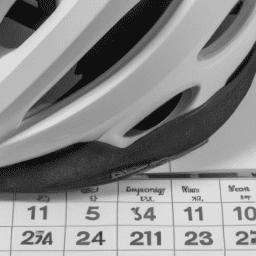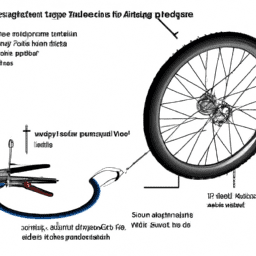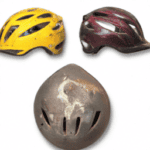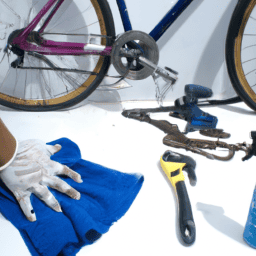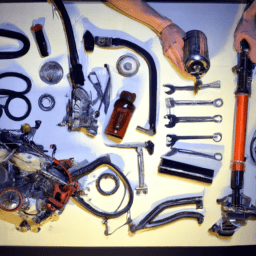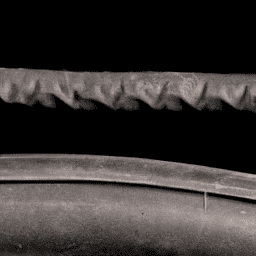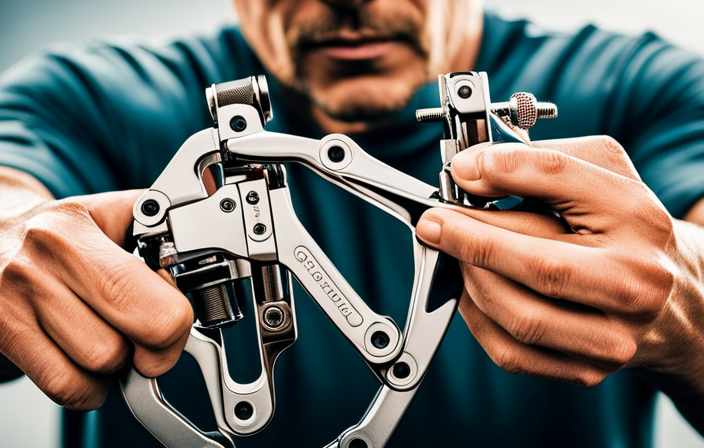As a passionate cyclist, you’re undoubtedly aware of the importance of wearing a helmet for protection. However, are you aware of how long your helmet remains effective? While it might be appealing to keep your helmet for an extended period, recognizing the right time to get a new one is essential for your safety.
In this article, we’ll explore the factors that affect the lifespan of bicycle helmets, industry standards and recommendations, signs that indicate you need to replace your helmet, and how to properly care for your helmet.
First and foremost, the lifespan of your bicycle helmet depends on several factors. These include the frequency and intensity of your rides, the conditions you ride in, and how well you take care of your helmet. It’s important to understand these factors so you can determine when it’s time to replace your helmet.
Additionally, industry standards and recommendations provide guidance on how often you should replace your helmet. By following these guidelines, you can help ensure that your helmet is providing the necessary protection to keep you safe on your rides.
Key Takeaways
- The lifespan of a bicycle helmet depends on various factors such as frequency/intensity of rides, conditions, and care.
- Industry standards recommend replacing a helmet every 3-5 years based on safety regulations, and signs to look for when replacing a helmet include cracks, loose/frayed straps, discomfort, and age.
- Proper care involves regular cleaning with gentle, non-abrasive cleaner and soft cloth, and helmet storage is important to prevent breakdown from sunlight, heat, and moisture.
- Following industry standards and recommendations ensures a helmet functions to its full potential and provides peace of mind, as helmet quality and maintenance can mean the difference between life and death on the road.
Factors that Affect the Lifespan of Bicycle Helmets
Don’t skimp on helmet quality or maintenance – it could mean the difference between life and death on the road.
The lifespan of a bicycle helmet can vary depending on several factors, including how often it’s used and how it’s stored. Helmets that are used frequently may need to be replaced more often than those that are used less frequently. This is because the foam inside the helmet can compress over time, reducing its ability to absorb impact and protect your head.
Helmet storage is also an important factor in determining the lifespan of your helmet. Exposure to sunlight, heat, and moisture can all cause the materials in your helmet to break down more quickly. It’s important to store your helmet in a cool, dry place when it’s not in use.
By taking proper care of your helmet, you can ensure that it will last as long as possible and provide you with the protection you need on the road.
As you move into the subsequent section about industry standards and recommendations, it’s important to keep these factors in mind when considering how long your helmet will last.
Industry Standards and Recommendations
You should know that experts recommend replacing your helmet every three to five years, even if it hasn’t been involved in an accident. This is because helmet expiration dates are not just arbitrary suggestions, but rather, they’re based on safety regulations.
The foam inside the helmet can break down over time, reducing its ability to protect your head in the event of an accident. Additionally, the helmet’s outer shell can become brittle and crack, compromising its integrity.
To ensure that you’re properly protected while cycling, it’s important to follow industry standards and recommendations for helmet replacement. By doing so, you can have peace of mind knowing that your helmet is functioning to its full potential.
In the next section, we’ll discuss some signs that indicate you need to replace your helmet, so stay tuned.
Signs that Indicate You Need to Replace Your Helmet
Hey, did you know that helmets have an expiration date and can deteriorate over time, making it necessary to replace them? It’s important to keep an eye out for signs that indicate when it’s time for a new helmet.
Here are some things to look for:
-
Cracks or dents in the helmet: Any visible damage to the outer shell of the helmet can compromise its effectiveness in protecting your head.
-
Loose or frayed straps: If the straps on your helmet are loose, frayed, or damaged in any way, it’s time to replace the helmet. The straps are a crucial part of the helmet’s fit and stability.
-
Helmet feels loose or uncomfortable: If your helmet no longer fits properly, it’s time for a new one. A helmet that is too loose can shift around and fail to protect your head in the event of an accident.
-
Helmet is old: Most helmets have an expiration date of around 5 years from the date of purchase. Even if your helmet looks fine, it may no longer be effective in protecting your head due to wear and tear.
Now that you know when it’s time to replace your helmet, let’s talk about how to properly care for your helmet to ensure it lasts as long as possible.
How to Properly Care for Your Helmet
To ensure your helmet remains in top condition, it’s crucial to regularly clean and inspect it. Sweat, dirt, and oils from your hair and skin can build up on the helmet, causing it to deteriorate faster.
Use a gentle, non-abrasive cleaner and a soft cloth to wipe down the helmet after each use. Avoid using harsh chemicals or abrasives that can damage the helmet’s outer shell or inner padding.
When storing your helmet, choose a cool, dry place away from direct sunlight and extreme temperatures. Sunlight and heat can cause the helmet’s materials to break down, making it less effective in protecting your head.
Avoid storing the helmet in the trunk of your car, as the temperature can rise quickly in there. Consider hanging the helmet on a hook or placing it on a shelf, rather than keeping it in a backpack or bag where it can get squished or deformed.
By following these cleaning tips and storage solutions, you can extend the life of your helmet and ensure it’s ready to protect you on every ride.
Frequently Asked Questions
Can you reuse a bicycle helmet after a crash?
After a crash, you should replace your bicycle helmet. Even if it appears undamaged, the helmet’s impact resistance may have been compromised, reducing its helmet durability and ability to protect you in the future.
Do different types of helmets have different lifespans?
Do different types of helmets have different lifespans? Helmet durability factors include the materials used, how often it’s used, and how it’s maintained. Replacement guidelines suggest replacing a helmet every 5 years or after a crash.
Can you clean a bicycle helmet with soap and water?
Yes, you can clean a bicycle helmet with soap and water. However, make sure to follow the manufacturer’s cleaning methods and avoid using harsh chemicals. Regular cleaning and maintenance can prolong the lifespan of your helmet.
Is it necessary to replace a helmet if it has never been involved in a crash?
If your helmet has never been in a crash, it still has an expiration date. Helmet durability depends on factors such as usage and exposure to elements. Replace your helmet every 3-5 years per manufacturer’s guidelines.
Are there any special storage requirements for bicycle helmets?
"Keep your helmet in tip-top shape by properly storing it in a cool, dry place away from direct sunlight. To maintain hygiene, avoid using harsh chemicals and instead opt for gentle soap and water." ‘Also, make sure to replace your helmet every few years or after any impact, as the foam and other materials can degrade over time and lose their effectiveness in protecting you.’
Conclusion
Congratulations on taking the necessary steps to ensure your safety on the road with a properly fitting bicycle helmet. You may have wondered how long your helmet will last and whether it needs to be replaced.
As suggested by industry standards, replacing your helmet every 3-5 years is recommended, but there are several factors that can impact its lifespan. Your helmet may need to be replaced sooner if it has been involved in a crash or has experienced any damage, such as cracks or dents.
Proper care and maintenance can also extend the life of your helmet, including avoiding extreme temperatures and keeping it clean. Remember, your helmet is more than just a piece of equipment; it’s a symbol of your commitment to safety and protection while cycling.
So, keep your helmet in good condition and replace it as needed to ensure that you can continue to enjoy your rides with peace of mind.
